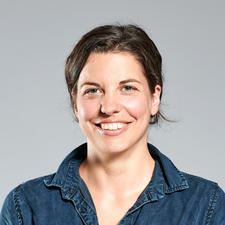11/26/2019
High resolution urban heat analysis
Climate change rises new demands on urban and area planning. On the basis of the innovative simulation model PALM-4U, Meteotest offers new high-resolution urban heat analyses. In Meteonorm, new urban heat cliamtologies are available.
The two heat waves from summer 2019 impressively showed how climate change will impact our life in Switzerland. The climate scenarios for Switzerland make clear that we will have to expect more and more such events in the future.
Urban climate: Local climate that differs from its surrounding climate due to effects of buildings and emissions.
World Meteorological Organization (WMO)
These changes rise new demands on urban and area planning: urban areas heat up significantly more than the surrounding areas during heat waves, the effect is called urban heat islands. There are small-scale differences even within these heat islands, not every area is affected equally. Urban areas must therefore anticipate this development and include it in their planning processes. To chieve this, it is essential to have precise information about where these heat hotspots are situated, but also where relevant ventilation channels and cold air drains are located. With the help of such information, cooling measures such as greening and water areas can be planned. It can also be ensured that the existing ventilation is not reduced by new buildings.
PALM-4U: New technology successfully applied
The technical requirements to provide such information are very high: The complex heating and cooling processes must be simulated in high spatial resolution. Precise information on buildings and the nature of the surface must be available as a basis.
At Meteotest we dealt with this question in order to be able to provide solutions for these needs. We are pleased that we are now able to carry out such analyzes. We apply the new, innovative meteorological simulation model PALM-4U. PALM-4U was specially developed for urban applications by a German research consortium [1]. With this model, it is possible to simulate selected past or future heat events in urban areas realistically in high spatial resolution of up to 10m and to make the results available for urban planning. On this basis, particularly affected areas can be identified. The calculation of development and climate scenarios is possible too.
In 2019 we have been working intensively on this new technology. We have familiarized ourselves with the model, adapted it to the conditions in Switzerland and are now able to produce tailor-made urban heat studies for urban areas in a short time and at low cost (2-3 months, 20-40,000 CHF. depending on the size of the municipalities / municipal associations). We have already successfully used PALM-4U for an investigation of the urban climate in the city of Lucerne (incl. Emmen and Ebikon) and are currently working on a simulation of the city of St. Gallen (incl. Gossau and Gaiserwald).
[1] https://palm.muk.uni-hannover....
Urban heat data in Meteonorm
In addition, the Meteonorm software now offers climatologies specifically prepared for urban heat for realistic energy planning of urban buildings. So far, the climatologies were based on the data from weather stations, which are typically located in the cooler surroundings and therefore do not correctly represent the city heat effect.

Your contact
Jan Remund
Head of Energy & Climate
| |

Your contact
Sara Koller
Head of Wind & Ice
| |